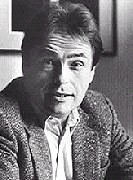Pierre Bourdieu


I. Cultural Conflict Theory
....A. combines Marxian theory of objective class position in relation to means of production with Weber analysis of status groups and politics
........1. status—lifestyles, tastes, prestige
........2. politics – organized efforts to have one’s class culture dominate others
....B. thus Bourdieu needs to expand Marx’s concept of capital
II. Classes and Capital
....A. 4 types of capital
........1. economic capital—productive capital (money and objects used to produce goods and services)
........2. social capital—positions and relations in groupings and social networks
........3. cultural capital—informal interpersonal skills, habits, manners, linguistic styles, tastes, and lifestyles, and education
........4. symbolic capital—use of symbols to legitimate the possession of the other types of capital an individual possesses
............a. owning a new Jaguar as opposed to an old Ford Mustang
............b. going to an art museum as opposed to going to Nascar
............c. reading the New Yorker as opposed to a supermarket tabloid
....B. forms of capital can be converted into one another, but only to a certain degree
........1. example: overproduction of educational credentials (cultural capital) may decrease their convertability to economic capital
........2. owners of credentials must struggle to convert social capital into economic capital
........3. extent to which economic capital can be converted into social capital may be threatened or facilitated by cultural capital
............a. whether a person is allowed into an exclusive club or country club may depend on your “taste”
....C. the distribution of these four types of capital determines the objective class structure
........1. the overall class structure reflects the total amount of capital possessed by various groupings
........2. within each class are various factions distinguished by
............a. composition or configuration of their capital
............b. social origin and amount of time that individuals in families have possessed capital resources
............c. thus the top faction controls the greatest amount of economic capital
............d. the bottom faction possesses the greatest amount of cultural and symbolic capital
............e. middle faction possesses intermediate amounts
........3. factions struggle to
............a. Control resources
............b. legitimize themselves
............c. to acquire social capital
........4. classes are not real groups, but only “potentialities”
............a. classes need people and concrete settings to become real
............b. it is the transformation of class and class-faction interests into actual groupings that marks the dynamics of a society
................i. economic, cultural and symbolic capital used to mobilize social capital (groups and networks)
................ii. symbols are manipulated to make a particular pattern of social, cultural, and economic resources seem the most appropriate
................iii. example: pro-Life movement, Prohibition
............c. homologies make it not an issue of simply class conflict
................i. homology exists when there are similarly situated factions in different social classes
................ii. in Prohibition capitalists aligned with middle-class Protestants
................iii. Lukacs suggests intellectuals align with the revolutionary working class
............d. other complications within and between classes can complicate class conflict
III. Class cultures and Habitus
....A. people in a given class share certain modes of classification, appreciation, judgment, perception and behavior
........1. they share a similar habitus
........2. habitus creates syndromes of taste, speech, dress, manner and other responses
........3. deeply ingrained so it becomes a general disposition to act
....B. correlation between class hierarchy and the cultural objects, preferences and behaviors
........1. bring in Veblen’s “leisure class” and “conspicuous consumption”
....C. thus “taste” is one of the most visible manifestations of habitus
........1. taste in an appreciation of art, ways of dressing, preferences for food
........2. various by class position and factions within classes
............a. between class differences rather obvious
............b. between factions less obvious
............c. example: old wealth v new wealth
................i. old upper class: polite and distant elegance
................ii. new upper class: noisy conspicuous consumption
IV. Class reproduction
....A. each social class exposes their children to different things that become internalized (socialization) into a general disposition to act (“habitus”)
....B. In habitus the objective social structure becomes internalized who then act in such a way to reproduce the social structure
....C. thus to get a high status job, you need to “fit in” with others who also have high status jobs
........1. thus how you act in job interviews count for a good deal
........2. what wine will you choose with dinner
........3. what topics of conversation will be discussed
....D. a lower class kid who quits school and resigns himself to some low status job helps to reproduce the class structure
........1. middle class teachers’ habitus clashes with lower class kids’ habitus
........2. school thus not rewarding and alien
....E. aspirations for getting ahead (subjective) are a reflection of the objective probabilities of getting ahead
........1. these become ingrained in cultural capital and habitus
........2. why school when a manly factory job is more desirable than a white collar job
....F. few good paying jobs that allow manly assertions to occur
........1. office jobs, like copy boy and messenger, have little respect
........2. more respect, and money, can be found on the streets dealing drugs and being violent
....G. thus lower class kids get lower class jobs; upper class people get upper class jobs